Benefits of Home Workouts: Why Your Living Room Might Be the Best Gym Ever
Discover the benefits of home workouts and why your living room might just be the best gym ever. Save time, skip the crowds, and get real fitness results—no membership required.
Key Takeaways
- Home workouts save an average of 45 minutes per session by eliminating travel time and gym wait times
- You can achieve the same fitness results as gym workouts using just bodyweight exercises and minimal equipment
- Home fitness eliminates gym membership costs (averaging $58/month) and provides 24/7 accessibility
- Studies show people who exercise at home maintain consistency 23% better than gym-goers due to convenience factors
- Privacy at home reduces exercise anxiety and builds confidence, especially for beginners or those returning to fitness
I’ll never forget that one Tuesday—I drove twenty minutes to the gym, spent another ten circling the parking lot like a lost soul, and finally got inside… only to find Brad (yeah, I gave him a name) doing his third set of bicep curls on the only squat rack. And there I was, paying sixty bucks a month for the joy of watching him.
Here’s the twist you didn’t see coming: that messy living room of yours—the one buried under laundry—might actually be a better gym than that overpriced fitness center. And no, this isn’t just me justifying my hatred of traffic.
Working out at home isn’t just about convenience (though, let’s be real, rolling out of bed and skipping the commute is glorious). Studies show people who train at home tend to stick with it longer, see better results, and—believe it or not—actually enjoy the process more. Who knew?
Let me walk you through why your own home might just be the ultimate gym you never realized you already owned.
Why Home Workouts Are Actually Genius (And Science Agrees)

The American Council on Exercise dropped some serious knowledge that made me do a double-take: home workouts deliver equivalent cardiovascular and strength benefits compared to traditional gym sessions. But here’s where it gets really interesting—the benefits of home workouts often actually beat what you’d get at a commercial gym.
I stumbled across this eye-opening 2023 study that tracked workout adherence rates, and it found something pretty remarkable. People who committed to at-home workouts stuck with their exercise routine 23% more consistently than those with gym memberships. The reason? They basically eliminated every excuse in the book.
There’s this mom from Denver, Sarah, who decided to skip the gym hassle and start working out in her basement with nothing but a resistance band. Six months later, she went from struggling through five push-ups to breezing through thirty. Her secret wasn’t some fancy routine—it was simply showing up every day. She proved that consistency beats intensity every single time.
This whole “home workouts aren’t real workouts” myth really needs to die already. I’ve dug into the research on home workouts, and the results are seriously impressive. Meta-analyses show measurable improvements in muscle strength, power, and endurance—numbers strong enough to make any personal trainer nod in approval. These aren’t just “good effort” results; they’re proof that real progress can absolutely happen in your living room.
The real magic of home workouts? They remove all the usual excuses—no gym anxiety, no waiting for machines, no commute. Just you, your space, and zero barriers to getting it done.
The Convenience Factor That Changes Everything
Let’s talk about some math that’ll make you seriously question every gym membership you’ve ever had. I’ve timed this stuff, and the average gym visit takes about ninety minutes when you factor in travel time, changing clothes, waiting for equipment, and the actual workout. Compare that to a focused thirty to forty-five minute home workout session that starts the moment you decide to exercise.
That’s forty-five minutes of your life back. Every. Single. Day.
I did the math on this (because I’m a nerd like that), and if you work out three times per week, you’ve just reclaimed over two hours weekly. That’s 104 hours per year—literally more than two full workdays—that you can spend doing literally anything else. Or realistically, probably more home workouts, because convenience breeds consistency like nothing else.
Even fifteen-minute sessions count when you’re working out at home. Got a gap between Zoom calls? Perfect time for jumping jacks and squats. Kids finally fell asleep? Quick HIIT session in the living room. Waiting for dinner to cook? That’s plank time, my friend.
Weather becomes completely irrelevant when your gym is your own home. Blizzard outside? No problem. Heat wave warning? Your air-conditioned living room has entered the chat. Monsoon season? Bring it on—you’re not going anywhere.
I can’t stress enough the mental freedom that comes with home workouts – it is huge! When the toughest part of your workout is the five steps to your living room, I bet you would more likely to do it than go to the gym. Why? No traffic, no fighting for a parking spot. No need to get confused what gym attire to wear—just you, your space, and the decision to show up.
Your Wallet Will Thank You (Seriously, Do the Math)
Let’s talk money, because honestly, the financial benefits of home workouts are almost ridiculous. The average gym membership costs fifty-eight bucks monthly, which adds up to $696 annually. Over five years? That’s $3,480. Over ten years? You’re looking at nearly seven grand. For what exactly?

Now consider this: I’ve put together complete home gym setups with resistance bands, adjustable dumbbells, and a yoga mat for around $200-400 one time. The math is so obvious it actually hurts to think about.
But wait—there’s more hidden costs to gym memberships that nobody talks about:
- Gas and parking: $15-30 monthly
- Protein shakes and supplements sold at gym prices: $40-60 monthly
- Specialized gym clothes you “need”: $20-50 monthly
- Locker fees and extras: $10-20 monthly
Suddenly, your “budget-friendly” gym membership is pushing $150+ monthly. Meanwhile, your home workout requires exactly zero ongoing costs. Zero.
Here’s the ROI breakdown on basic equipment that I actually use:
- Resistance bands ($15-25): These things replace an entire cable machine system
- Adjustable dumbbells ($150-300): Eliminate the need for multiple weight machines
- Yoga mat ($20-40): Provides cushioning for floor exercises and stretching
- Kettlebell ($30-60): Full-body functional movements in one simple tool
That initial investment pays for itself within two to four months compared to gym costs. Everything after that? Pure savings, my friend.
The free alternatives make the financial case even stronger. YouTube channels offer thousands of professional-quality workout videos. Fitness apps provide structured exercise programs. Bodyweight routines require absolutely nothing except floor space. I mean, come on.
Equipment? What Equipment? (You Have Your Own Body Weight)
Here’s where home workouts really shine: your own body weight provides all the resistance you need for an incredible full-body workout. No gym equipment required, no membership fees, no excuses.
Let me break down how bodyweight exercises can replace every major gym machine (this blew my mind when I first figured it out):
Push-up variations replace bench press, incline press, and tricep machines:
- Standard push-ups target chest and triceps
- Incline push-ups (hands elevated) work upper chest
- Decline push-ups (feet elevated) hit lower chest
- Diamond push-ups focus on triceps
- Wide-grip push-ups emphasize outer chest

Squat and lunge progressions absolutely demolish any leg machine:
- Bodyweight squats build foundational strength
- Jump squats add explosive power
- Single-leg squats (pistol squats) create unilateral strength
- Lunges target glutes and improve balance
- Plyometric lunges boost cardiovascular fitness
Core exercises that beat any ab machine:
- Planks engage the entire core
- Mountain climbers combine core and cardio
- Bicycle crunches target obliques
- Dead bugs improve core stability
- Russian twists work rotational strength
Progressive overload—the key to continuous improvement—happens through increased reps, longer hold times, more challenging variations, or adding explosive movements. No weights needed, no problem.
When You’re Ready to Level Up: Smart Equipment Choices
Once you’ve mastered bodyweight movements (and trust me, this takes longer than you think), minimal equipment can unlock entirely new dimensions of your fitness routine.
Resistance bands are honestly the MVP of home gym equipment. For under twenty bucks, you get:
- Variable resistance that mimics weight machines
- Ability to target every muscle group
- Travel-friendly portability
- Joint-friendly resistance curves
Adjustable dumbbells provide the strength training progression most people crave. Instead of buying fifteen different weights (who has space for that?), one adjustable set covers 5-50+ pounds per hand.

Kettlebells offer the ultimate functional movement tool. I’ve been using one for years, and a single kettlebell enables:
- Full-body strength training
- Cardiovascular conditioning
- Explosive power development
- Improved coordination and balance
What NOT to buy: Those “As Seen on TV” contraptions promising magical results. Skip the ab rollers, thigh masters, and shake weights. I’ve learned this the hard way—stick to time-tested equipment that serves multiple functions.
Privacy and Confidence Building (No Gymtimidation Zone)
Gym anxiety are pretty heartbreaking. Almost half of women say they feel intimidated at the gym, and around two-thirds of beginners skip exercises because they’re scared of being judged. I get it—it’s tough to concentrate on your form when it feels like every eyes is on you, scrutinizing your every move if it is correctly executed or not. It is even harder when the space doesn’t feel welcoming unless you already “look the part.”
Your own home eliminates this entirely. Like, completely.
In your living room, you’re free to:
- Learn proper form without feeling watched
- Grunt, sweat, and look ridiculous while exercising
- Try new movements without embarrassment
- Progress at your own pace
- Wear whatever makes you comfortable (yes, even those ratty old shorts)
This safe space becomes crucial for building confidence. When you nail your first real push-up or hold a plank for a full minute, there’s no audience—just your personal victory. These small wins compound into genuine confidence that eventually spills over into other areas of life.
I’ve noticed the privacy factor is particularly beneficial for:
- Beginners learning basic movement patterns
- Postpartum women rebuilding strength and confidence
- Injury recovery requiring modified movements
- Older adults working on balance and mobility
- Anyone dealing with body image concerns
Building confidence at home often creates a stepping stone to public fitness spaces. Many people I know start with home workouts, develop skills and confidence, then transition to gyms, group classes, or outdoor activities with newfound self-assurance.
Making Home Workouts Challenging and Effective
The biggest myth about home workouts? That they can’t be challenging or effective. Tell that to anyone who’s attempted a proper HIIT session in their living room—they’ll laugh at you while gasping for air.
Progressive overload—the principle driving all fitness improvements—works perfectly with minimal equipment. Here’s how I’ve seen it work:
Time-based progressions:
- Week 1: 30-second planks
- Week 4: 60-second planks
- Week 8: 90-second planks
Rep-based progressions:
- Week 1: 5 push-ups
- Week 4: 15 push-ups
- Week 8: 30 push-ups
Complexity progressions:
- Week 1: Wall push-ups
- Week 4: Knee push-ups
- Week 8: Full push-ups
- Week 12: Decline push-ups
HIIT protocols that maximize calorie burn in small spaces are absolute game-changers. A simple circuit I love includes:
- 45 seconds jumping jacks
- 15 seconds rest
- 45 seconds burpees
- 15 seconds rest
- 45 seconds mountain climbers
- 15 seconds rest
- Repeat for 4-6 rounds
This type of circuit training keeps your heart rate elevated, burns calories efficiently, and builds both cardiovascular endurance and muscular strength simultaneously. It’s basically magic.
Circuit training prevents boredom while maintaining intensity:
- Upper body circuit (push-ups, tricep dips, planks)
- Lower body circuit (squats, lunges, glute bridges)
- Full-body circuit (burpees, mountain climbers, jump squats)
- Core-focused circuit (planks, bicycle crunches, Russian twists)
The key to avoiding plateaus without a gym full of equipment? Creativity and consistency. When regular squats become easy, try single-leg squats. When push-ups feel routine, add explosive movement or change hand positions. There’s always a way to make things harder.
Structure and Accountability at Home
Working out at home doesn’t mean working out randomly—though I’ve definitely tried that approach and it doesn’t work. Structure matters just as much in your living room as it does in a commercial gym.
Creating workout schedules starts with realistic assessment. Three thirty-minute sessions weekly beats seven ambitious ninety-minute sessions that never happen. I’ve learned this lesson multiple times, and consistency trumps intensity every single time.
Sample weekly structure I actually use:
- Monday: Upper body strength
- Wednesday: HIIT cardio
- Friday: Lower body and core
- Weekend: Active recovery (walking, stretching)
You don’t need a gym buddy to stay motivated—virtual friends can keep you just as accountable. Whether it’s through apps like Strava or a group chat full of post-workout selfies, a little online encouragement goes a long way.
Tracking progress without gym equipment requires creativity:
- Photo documentation of form improvements
- Timing how long you can hold challenging positions
- Counting reps and sets completed
- Measuring how you feel during and after workouts
- Tracking consistency streaks
Setting up your space for success means designating a specific area for exercise, keeping any equipment visible, and removing barriers to starting your fitness routine. I keep my yoga mat rolled out in the corner of my living room as a constant reminder.
Common Myths Busted (Let’s Get Real)
Myth: “You can’t build real muscle at home”
The evidence suggests otherwise, and I’ve seen it firsthand. A ten-week study of young women using only bodyweight exercises showed:
- 33% improvement in aerobic capacity
- 11% increase in core endurance
- 6% boost in lower-body power
Muscle growth depends on progressive overload and adequate protein, not location. Bodyweight movements can absolutely stimulate muscle hypertrophy when performed with proper intensity and progression. Brad with his bicep curls can keep the squat rack.
Myth: “Home workouts aren’t intense enough”
Heart rate data from home HIIT sessions often shows zones comparable to or exceeding traditional gym workouts. The limiting factor isn’t space or equipment—it’s willingness to push yourself.
A simple burpee tabata (20 seconds all-out, 10 seconds rest, repeated 8 times) will have you questioning this myth pretty quickly. Trust me on this one.
Myth: “You need a gym for cardio”
Jumping jacks, mountain climbers, high knees, and burpees provide excellent cardiovascular training. Many home cardio workouts actually burn more calories per minute than steady-state treadmill sessions. Plus, you don’t have to wait for a machine or listen to someone else’s terrible music.
Myth: “Home workouts are boring”
This says more about creativity than home fitness. With thousands of free YouTube channels, app-based programs, and endless exercise variations, boredom comes from lack of exploration, not lack of options.
Mix things up with:
- Different workout styles (yoga, HIIT, strength, dance)
- Varying workout lengths (15-minute quickies to 60-minute sessions)
- Music changes and environmental modifications
- Challenge-based routines and goal setting
Getting Started the Right Way
Setting up your home workout space doesn’t require a dedicated room or expensive renovation. I’ve worked out effectively in some pretty tiny apartments, and even small spaces can accommodate killer exercise routines.

Minimum space requirements:
- 6×6 feet for bodyweight exercises
- 8×8 feet for equipment-based workouts
- Clear ceiling height for jumping movements
Space optimization tips I’ve learned:
- Use foldable equipment that stores easily
- Choose multi-purpose items (resistance bands, adjustable weights)
- Clear the area before each workout session
- Utilize outdoor spaces when weather permits
Beginner-friendly 2-week starter routine:
Week 1: Foundation Building
- Day 1: 10 squats, 5 push-ups (modified if needed), 20-second plank
- Day 3: 15 squats, 8 push-ups, 30-second plank
- Day 5: 20 squats, 10 push-ups, 40-second plank
Week 2: Building Momentum
- Day 1: 25 squats, 12 push-ups, 45-second plank
- Day 3: 30 squats, 15 push-ups, 60-second plank
- Day 5: 35 squats, 18 push-ups, 75-second plank
Motivation maintenance strategies that actually work:
- Schedule workouts like appointments
- Track progress visually (calendar, app, journal)
- Set small, achievable weekly goals
- Reward consistency milestones
- Connect with online fitness communities
Safety considerations (because nobody wants to explain a weird injury):
- Warm up before intense exercise
- Learn proper form through reputable sources
- Listen to your body and rest when needed
- Progress gradually to avoid injury
- Maintain proper hydration during workouts
When to consider adding gym sessions:
- Desire for specialized equipment (heavy lifting weights)
- Need for group class energy and motivation
- Specific sport training requirements
- Social fitness goals
- Advanced strength training progression
Remember, home workouts and gym sessions aren’t mutually exclusive. Many successful fitness enthusiasts combine both, using home workouts for consistency and gyms for variety or specialized training.
The beauty of starting at home? You develop discipline, proper form, and genuine fitness habits before ever stepping foot in a commercial gym. When you do decide to explore other options, you’ll arrive as a confident, experienced exerciser rather than an intimidated beginner who’s scared of Brad and his bicep curls.
Your living room is waiting, complete with everything you need for an incredible workout. The only question left is: what are you going to do with it?
FAQ
Can I really build muscle effectively with just bodyweight exercises?
Absolutely—and I’ve seen the transformation photos to prove it. Research shows that bodyweight exercises can stimulate muscle growth through progressive overload, whether that’s increasing reps, adjusting exercise difficulty, or extending workout duration. Studies demonstrate significant strength gains (standardized mean difference of 0.30) from bodyweight-only programs. The key is progression: advancing from wall push-ups to standard push-ups to decline push-ups, for example, provides continuous muscle-building stimulus. Brad’s bicep curls have nothing on a proper progression plan.
How much space do I need for an effective home workout?
You can achieve excellent results in as little as 6×6 feet of clear floor space—I’ve done it in studio apartments that made closets look spacious. This allows for most bodyweight movements including squats, lunges, push-ups, and planks. For equipment-based workouts, 8×8 feet provides more comfort. Many effective exercises require even less space—you can do wall push-ups, calf raises, and standing movements in just 3×3 feet. Sometimes the best workouts happen in the smallest spaces.
What’s the minimum equipment I need to get started with home workouts?
Technically, you need zero equipment—your body weight provides sufficient resistance for strength training, cardio, and flexibility work. However, I’d recommend a basic yoga mat ($20-40) for comfort and grip during floor exercises. If you want to expand options, resistance bands ($15-25) offer the biggest bang for your buck, effectively replacing an entire gym’s worth of cable machines. I’ve built my entire home gym around these basics, and it’s served me well for years.
How do I stay motivated to work out at home without a trainer or gym environment?
I’ve struggled with this myself, and here’s what works: create structure through scheduled workout times, track your progress visually (photos, rep counts, timing), and connect with virtual fitness communities for accountability. Set small, achievable weekly goals rather than overwhelming long-term targets. Many people find success with workout apps that provide guided sessions, or following along with live classes that simulate group fitness energy from home. Sometimes the best motivation is removing all the barriers to getting started.
Are home workouts suitable for advanced fitness enthusiasts or just beginners?
Home workouts absolutely work for advanced fitness levels—elite athletes often incorporate bodyweight training for functional strength, injury prevention, and conditioning. Advanced progressions like single-arm push-ups, pistol squats, and plyometric movements provide significant challenges that’ll humble even experienced gym-goers. Adding minimal equipment like resistance bands or kettlebells creates virtually unlimited progression possibilities. I’ve seen advanced athletes get humbled by a simple bodyweight circuit. The limitation isn’t the location—it’s creativity in programming challenging routines.


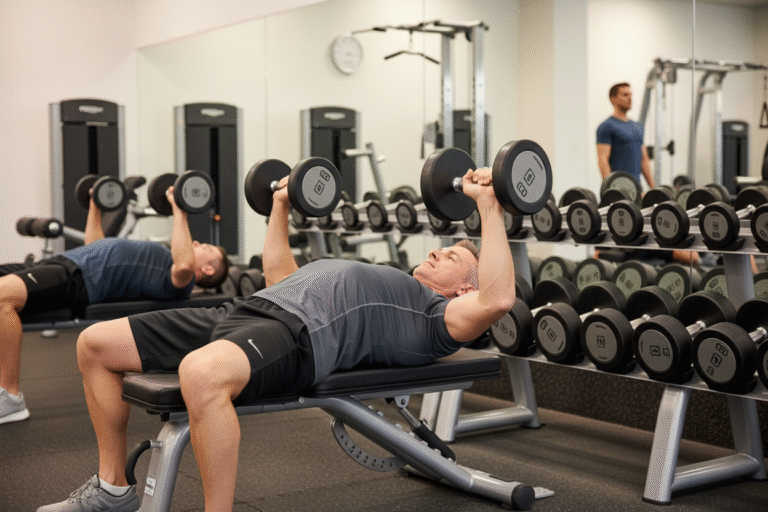
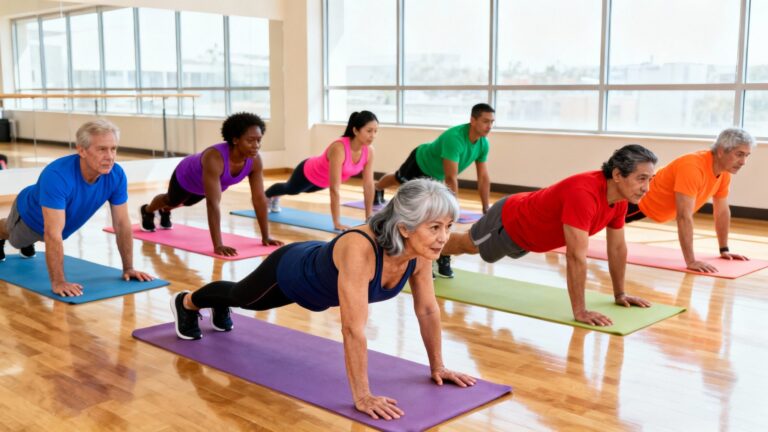

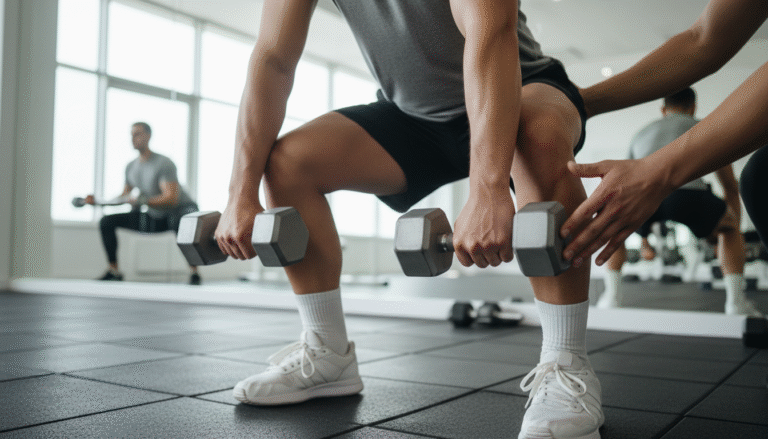
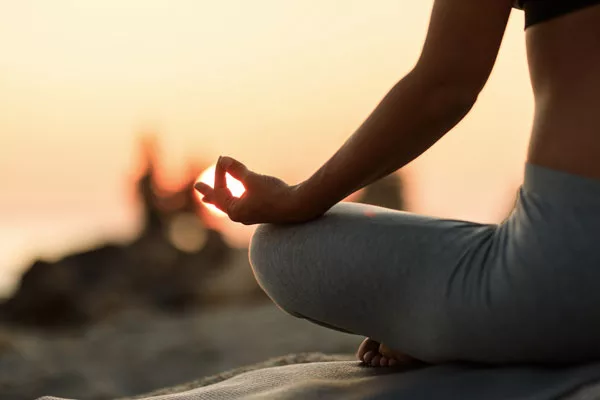
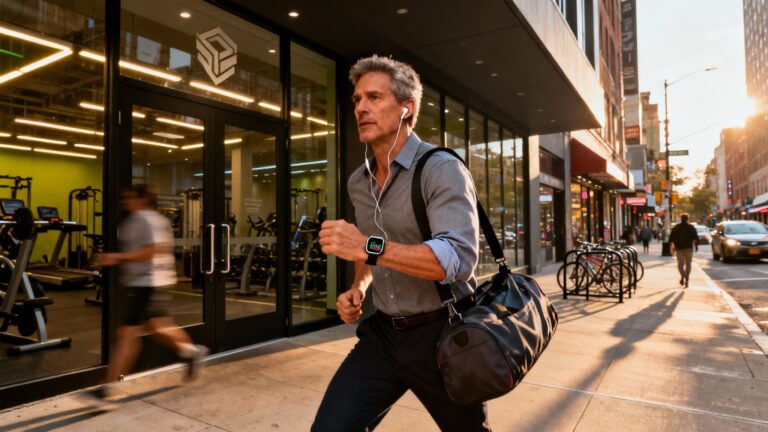
One Comment
Comments are closed.